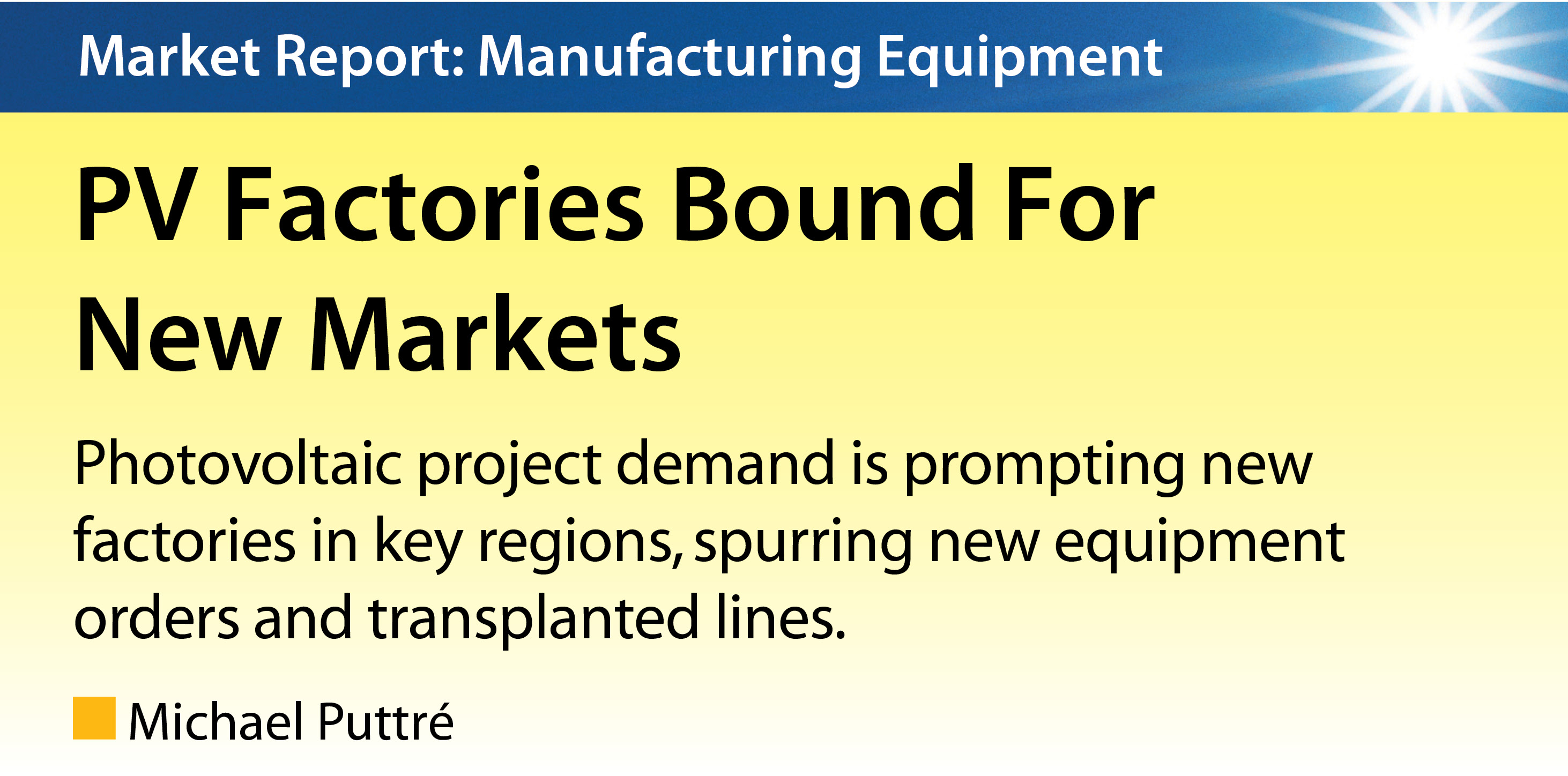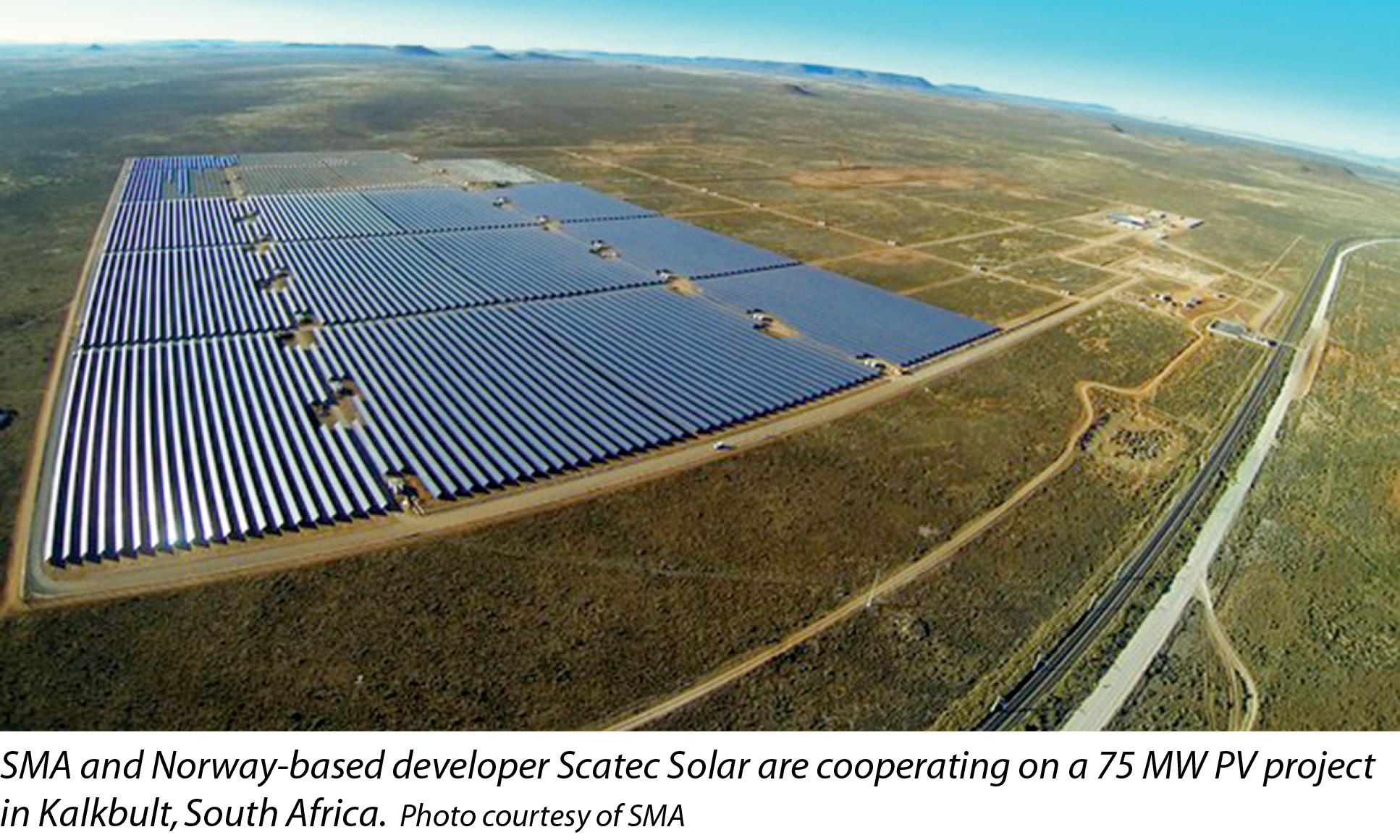

301 Moved Permanently
A report from IHS says solar capital spending in emerging economies rose 23% this year, and analysts expect it to keep rising in the low 40% range for every year through 2017. This comes on a year of essentially zero growth in capital spending in established economies.
The report says emerging markets account for 7.9 GW of the world’s total known capacity for photovoltaic materials and products, from ingots through modules, with the potential to climb to nearly 11 GW by 2017. According to Jon Campos, solar analyst at IHS, South America, Africa and the Middle East now are leading the world in solar capacity additions. As demand expands in new areas, PV manufacturers are gaining interest in producing their wares in these regions, resulting in new factory openings and boosting local capital spending.
According to a November report from NPD Solarbuzz, increasing solar project demand will enable some manufacturers of polysilicon wafers and cells to bring up new equipment lines or reactivate dormant capacity that had been sidelined by the market glut. The report says some manufacturers are also making deals with competitors to make use of their surplus wafer-making capacity. 
Demand soaks up oversupply
An example of this trend can be found with Yingli Green Energy. The company reports continued rapid growth in demand from China, the U.S., Japan and emerging PV markets in the third quarter of this year, driving its shipments to an historical high. Based on current market and operating conditions, estimated production capacity and forecast customer demand, Yingli says it expects to have PV module shipments of 3.2 GW to 3.3 GW for this fiscal year - an increase of 39.4% to 43.7% compared to fiscal year 2012.
Demand from emerging markets grew rapidly throughout all segments, both commercial and residential, the company says. An interesting aspect of this demand surge is that Yingli is boosting its manufacturing capacity by subcontracting manufacturing out to other companies. Reuters reports that in 2014, Yingli plans to expand its manufacturing capacity in China from 2.45 GW to a total of 4 GW, in part by taking over the surplus capacity of other wafer manufacturers.
The next big opportunity for growth in the global solar business lies in small, emerging markets, says a September report by IHS. Photovoltaic installations are forecast to rise at about triple the global average during the period from 2012 through 2017.
Annual installations in these emerging countries are expected to increase to 10.9 GW in 2017, expanding at a compound annual growth rate (CAGR) of 38% from 2.2 GW in 2012, according to the report. In contrast, the overall global market will expand at a CAGR of only 13% during the same period. The emerging markets will account for 19% of global solar installations in 2017, up from just 7% in 2012.
While much of this demand in emerging economies will be filled by shipments from large manufacturers in China, the economics of PV development in emerging economies also favor increasing capital investment in PV manufacturing in regions close to the sources of demand.
Researchers at the U.S. Department of Energy’s National Renewable Energy Lab (NREL) and the Massachusetts Institute of Technology found that as PV supply chains mature, the location of solar power demand becomes more important than labor costs and government industrial policy. For certain parts of the supply chain, such as module assembly, shipping costs matter.
As the industry approaches a $0.50/W module price, shipping costs - currently on the order of $0.03-0.05/W - stand out, and stand to play a more important role in factory location decisions. Ted James, an energy analyst at the Strategic Energy Analysis Center, says that as manufacturing efficiencies increase and costs go down, shipping costs become more of a proportional factor.
Getting close to the action
In late 2012, China Sunergy Co. Ltd. set up a new manufacturing facility in Istanbul, Turkey, in partnership with a local developer. The partnership jointly invested in three new companies under the name CSUN Eurasia. The entities will produce PV cells and PV modules in Turkey and invest in downstream solar projects in the region.
The first 150 MW solar module line installed in the new facility opened production in January, and a 150 MW solar cell line started up in March. The company is also moving an additional 200 MW of equipment to the Turkey plant from existing facilities in Shanghai to gradually ramp up production in the first half of 2014.
In June, Saudi Arabia-based solar technology development firm Green Gulf Holding signed an initial agreement with Kinetics Germany GmbH to build an ingot and wafer factory in Yanbu. The company says it also has an initial agreement with Meyer Burger Technology AG to purchase equipment for the manufacture of 200 MW of solar modules.
In April, ReneSola Ltd. signed a manufacturing agreement with South Africa-based Solairedirect SA for solar modules. Under the terms of the agreement, Solairedirect will manufacture 120 MW of ReneSola-branded modules for a period of three years through its local module manufacturing subsidiary Solairedirect Technologies Ltd.
In addition, Solairedirect has committed to purchasing 20 MW of the solar modules for use in projects in South Africa and 34 MW of the solar modules for export. Solairedirect says it expects to significantly expand its module production capacity over time - perhaps doubling this year or next - and it may produce additional solar modules for ReneSola under the current tolling agreement.
Increasing demand from PV projects in South Africa is not just having an impact on manufacturing of wafers and modules. Balance-of-system manufacturers are also moving production closer to the action. SMA Solar Technology AG has announced it will set up a Sunny Central inverter production facility in South Africa.
SMA says preparations for constructing the plant in South Africa are under way and will mirror existing inverter production lines in Germany and North America. A company spokesperson says the facility would be able to produce multiple inverter models and be able to ramp up and scale down according to market demands.
The company says its goal is to serve a growing market and meet the local-content requirements in South Africa. In December, the 75 MW Kalkbult PV facility in South Africa went into operation with 84 SMA Sunny Central 800CP inverters, 42 Transformer Compact Stations and 840 Sunny String Monitors. SMA intends to be able to serve future projects with locally produced inverters.
This is not to say that solar manufacturing in emerging economies is proceeding without setbacks. In June, Algeria’s government-owned gas and electric utility canceled a contract with centrotherm photovoltaics AG for it to build a solar module factory worth EUR 290 million. While centrotherm did not announce any reason for the termination of the contract, market oversupply and regional instability may have been contributing factors. S
Market Report: Manufacturing Equipment
PV Factories Bound For New Markets
By Michael Puttré
Photovoltaic project demand is prompting new factories in key regions, spurring new equipment orders and transplanted lines.
si body si body i si body bi si body b
si depbio
- si bullets
si sh
si subhead
pullquote
si first graph
si sh no rule
si last graph